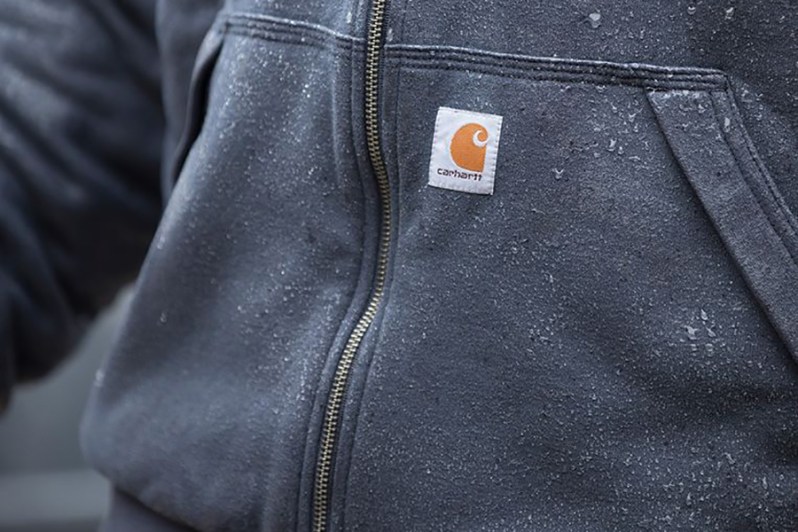Why would you pay more for a glass of, say Remus Repeal Reserve Straight Bourbon Whiskey than you would for a glass of rotgut off the rail? Why is a Corvette more expensive than a Corolla? Why shell out for filet mignon when a burger is beef, too?
Quality. For, with apologies to rotgut, Corollas, and burgers, as for the other stuff — it’s just better stuff. When you know you’re getting a top-quality product, you feel just fine about paying for it. And when you buy a product from Carhartt, you’re getting top-quality hard-working apparel, just like customers have since the company was founded back in the 19th century.

“Carhartt is a 130-year-old family-owned company started by Hamilton Carhartt, a real person,” said Ben Ewy, Vice President of Global Product Design Research and Development. “Hamilton started out with a horse and wagon business in southern Michigan. He would spend six weeks on his route making his sales. This was back in 1889, right as much of the United States was industrializing. On his travels, he started seeing a need, especially for the men working on the rails. He set out to make a better work bib by working directly with train engineers. He asked these men what they needed out of their bibs. What happened was, they all said they needed gear that was durable, functional, flexible so they could move in it, store tools in it.”
“We go to the job site to see their needs, to talk to them, and we bring them in during our design phases. We take their ideas and notes as we develop.”
The bib — which you can think of as rugged overalls — that Carhartt designed would become a prized possession of the trainmen, and soon set the standard for workwear beyond the rail yards. Thirteen decades on, little has changed in many ways.
“Today, 130 years later, we still work the same way Hamilton did,” Ewa explained. “The design team goes on two or three dozen job site visits every year and we’re very much in touch with our consumer. We work closely with them. We go to the job site to see their needs, to talk to them, and we bring them in during our design phases. We take their ideas and notes as we develop.”

By designing workwear that’s genuinely intended for use in the most trying conditions and by never cutting corners in the process, Carhartt has become, among its worldwide consumer base, synonymous with quality, with durability, and with dependability. Today, the brand offers everything from men’s boots to women’s base layers to toddler jackets, but every single piece of apparel Carhartt sells is created to meet the same exacting standards of the industrial worksite. The company now has specialty product categories like winter gear and flame-resistant clothing, but even as Carhartt expands and grows, it prides itself on never losing sight of its founding principles.
“There is no light-duty Carhartt product. When people see that Carhartt patch, it’s a promise from us that you can wear it on any rugged job site in the world.”
And even as Carhartt adds ever more products, its bib is still the standard-bearer. “Really, we still build product the same way Hamilton Carhartt did, and we keep our product good by this constant feedback loop that hits the needs of hardworking people everywhere,” said Ben Ewy. “Our flagship product is really still the same work bib we first made in the 1800s. You still see people wearing the latest versions of the bib that’s really just an updated job site classic. So many of our products are just updated versions of our classics. We always want to make what we make better.”

Asked what separates Carhartt from other brands offering similar apparel, Ewy answered: “There is no light-duty Carhartt product. When people see that Carhartt patch, it’s a promise from us that you can wear it on any rugged job site in the world. We will never go below our specs. We’re a workwear company, not a fashion brand, and we don’t make light-duty products.”
“Also,” he added, “we don’t over-design. We don’t put anything in there that’s not functional. We don’t put in things that are decorative, we don’t put in things that just look cool. Every stitch we put in there is functional, every design element has a purpose.”
Most Carhartt bibs cost more than $100. Some cost more than $200. Yet if you ever manage to wear out a Carhartt product, chances are you’ll replace it at once with another. Few and far between are the brand’s one-time customers. You don’t get to 130 years old by making cheap stuff.



